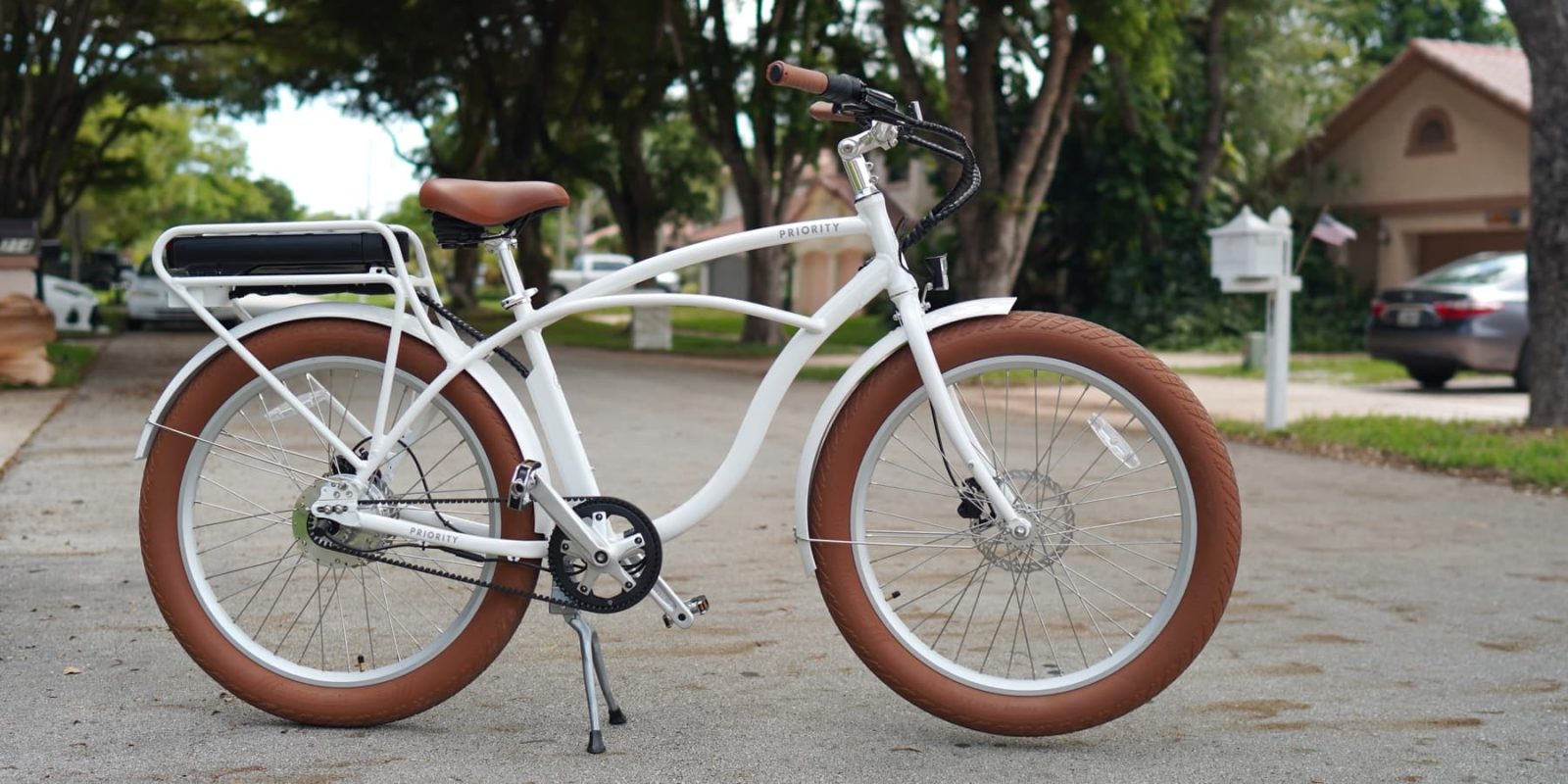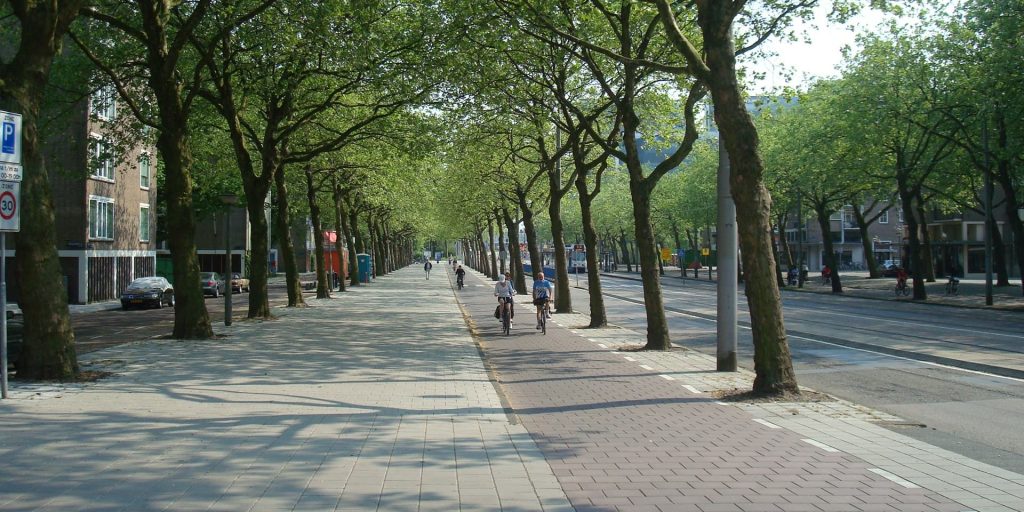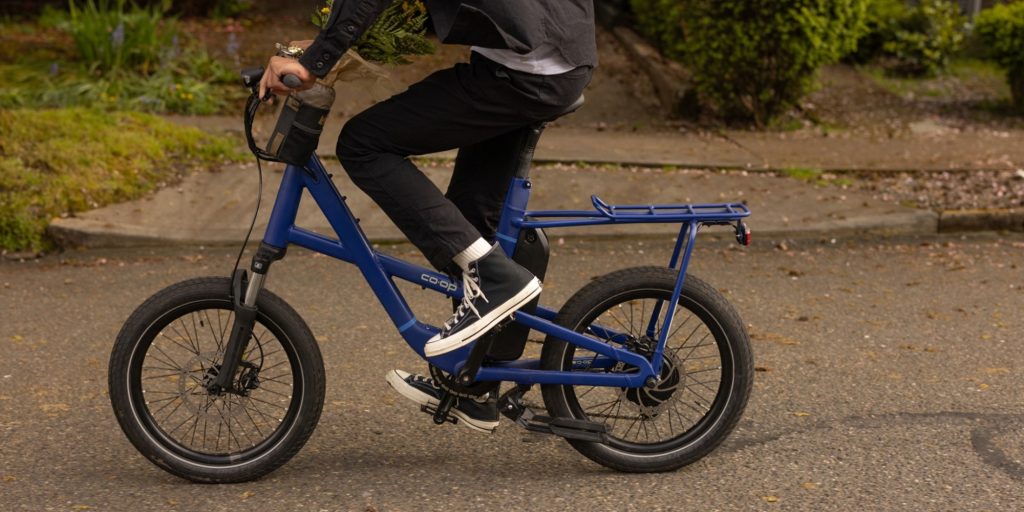
Electric bicycles continue to surge in popularity across the United States, bringing with them a host of benefits but also, inevitably, a few concerns. Despite e-bikes racking up points from new commuters across the country for being lower-cost car alternatives that turn commutes and errand running into joyrides, these powerful new transportation tools aren’t without their detractors, too.
Concerns among some members of the public have ranged from safety issues of sharing roads with cars to the risk of battery fires. However, there exists a straightforward solution that could alleviate nearly any worry anyone has about electric bikes: investing in better cycling infrastructure.
There’s a simple solution for e-bikes
It’s really quite easy. If you can find a supposed “problem” with electric bikes, I can all but guarantee that the solution is to invest in better cycling infrastructure.
Let’s try it out. Critics and potential users alike have voiced apprehensions around the danger of navigating alongside faster, heavier vehicles like cars and trucks. It’s a legitimate concern, as riders don’t want to get pancaked by a SUV any more than those drivers want to kill a cyclist.
So what’s the answer? Better cycling infrastructure in the form of separated bicycle lanes!

The fear of sharing the road with cars is valid; automobiles and bicycles are mismatched in terms of size, speed, and protection. Implementing dedicated, protected bike lanes ensures a safe space for e-bike riders, free from the risks posed by close proximity to motor vehicles.
Cities around the world with high cycling rates have proven that comprehensive networks of bike lanes can significantly reduce accidents and improve safety for all road users.
It also serves car drivers by getting cyclists out of their way and ultimately reducing car traffic by encouraging more people to switch to an e-bike for local trips.

What about the issue that many finger-waggers have with teenagers riding e-bikes? “Those darn youths are all over the road…” is a common refrain these days.
Here’s a solution: better cycling infrastructure. If there were more bike lanes around, you wouldn’t have to worry about teenagers riding their e-bikes near your car because they’d have their own convenient, safe, and separated bike lanes to ride in. It works for other countries, why not yours?
The same goes for pedestrian safety. Many pedestrians fear e-bike riders blowing down the sidewalk and knocking them over. It’s a legitimate concern and a prime example of why e-bikes shouldn’t be ridden on crowded sidewalks.
But when cyclists have to choose between sidewalks or the narrow shoulder of a fast urban highway, it’s no surprise they choose the relative safety of sidewalks. If cities invested in better cycling infrastructure, I suspect the third option of a nice and safe bike lane would be the winning option.

What about the fear many riders have of getting their bike stolen? Or of battery fires during charging (a rare but not unheard of occurrence)? Again, better cycling infrastructure to the rescue!
The deployment of secure locking and charging stations can address both issues simultaneously. By providing designated areas for e-bikes that are equipped with safe charging infrastructure, cities can minimize the risk of theft and mitigate fire hazards. These stations would not only offer a secure place to charge and store e-bikes but also encourage their use by alleviating concerns over battery safety and longevity.
Safe, secure bike parking is all over the Netherlands. E-bike charging stations are all over China. Humanity has figured out these solutions, we just need to implement them here at home.

The Broader Benefits
Investing in better cycling infrastructure doesn’t just solve the immediate concerns of e-bike users, it has far-reaching benefits for the community at large. Improved bike lanes and secure charging stations can lead to increased e-bike adoption, reducing traffic congestion, lowering emissions, and contributing to a healthier, more active population.
Enhancing cycling infrastructure signals a commitment to sustainable transportation options and inclusivity, ensuring that everyone, regardless of age, ability, or economic status, has access to safe and reliable mobility solutions.

Top comment by Stuart
America has great infrastructure for cars. Not so great for motorcycles, bicycles, and pedestrians. Anywhere they come together it will turn out badly when a SUV hits anything not fully enclosed.
Where I walk and ride (mostly Oakland and Berkeley, CA) sidewalks are pretty good but don't protect pedestrians crossing intersections or driveways. Bike lanes aren't too helpful because most are separated from traffic lanes only by painted lines. I feel safer cycling on quiet streets without bike lanes than on busy streets with them.
AFAIK we have zero infrastructure specifically for e-bikes, which IMHO are too slow for traffic lanes and too fast for bike lanes and sidewalks. Around here most people in bike lanes ride around 10-12 mph and most pedestrians walk about 2-3 mph. On multiple occasions I've nearly been hit by e-bikes going 20-30 mph.
That raises the issue that Americans seem less inclined to follow rules than Europeans. Bike lanes work better when only bikes use them but in my experience here they're routinely used by cars for parking, loading, turning, and even passing on the right. I think physical barriers would help. Also sidewalks are routinely used by bicycles, I have no idea how to reduce that. Posting images of someone riding an e-bike in a prone position doesn't seem helpful.
Finally I don't think infrastructure can do much to reduce single-vehicle crashes with inherently unstable 2-wheeled vehicles.
The rapid rise of electric bicycles is a blessing for urban transportation but also raises the pressing need for cities across the U.S. to adapt and embrace cycling infrastructure.
While concerns about safety and battery management are valid, they can be effectively addressed through thoughtful urban planning and investment in infrastructure tailored to e-bike use.
By prioritizing separated bike lanes and secure locking and charging stations, we can unlock the full potential of e-bikes as a cornerstone of urban mobility, making our cities safer, cleaner, and more accessible for everyone.
The answer of “build better biking infrastructure” is easy to say but harder to implement. It requires all of us to recognize the benefits and push our cities to act. It’s not just about cyclists, but rather about improving cities for all of us. When cyclists have safer areas to ride and store their bikes, everyone benefits.
FTC: We use income earning auto affiliate links. More.




Comments